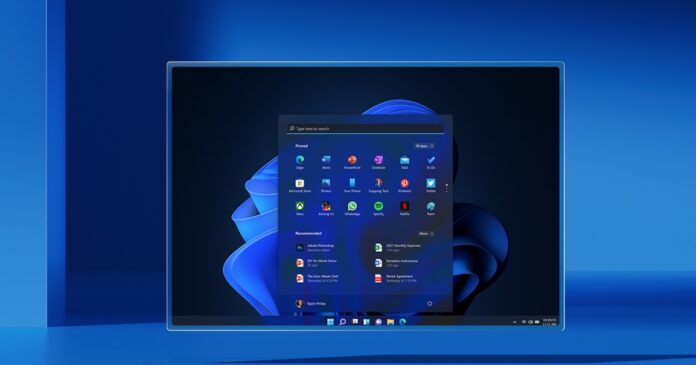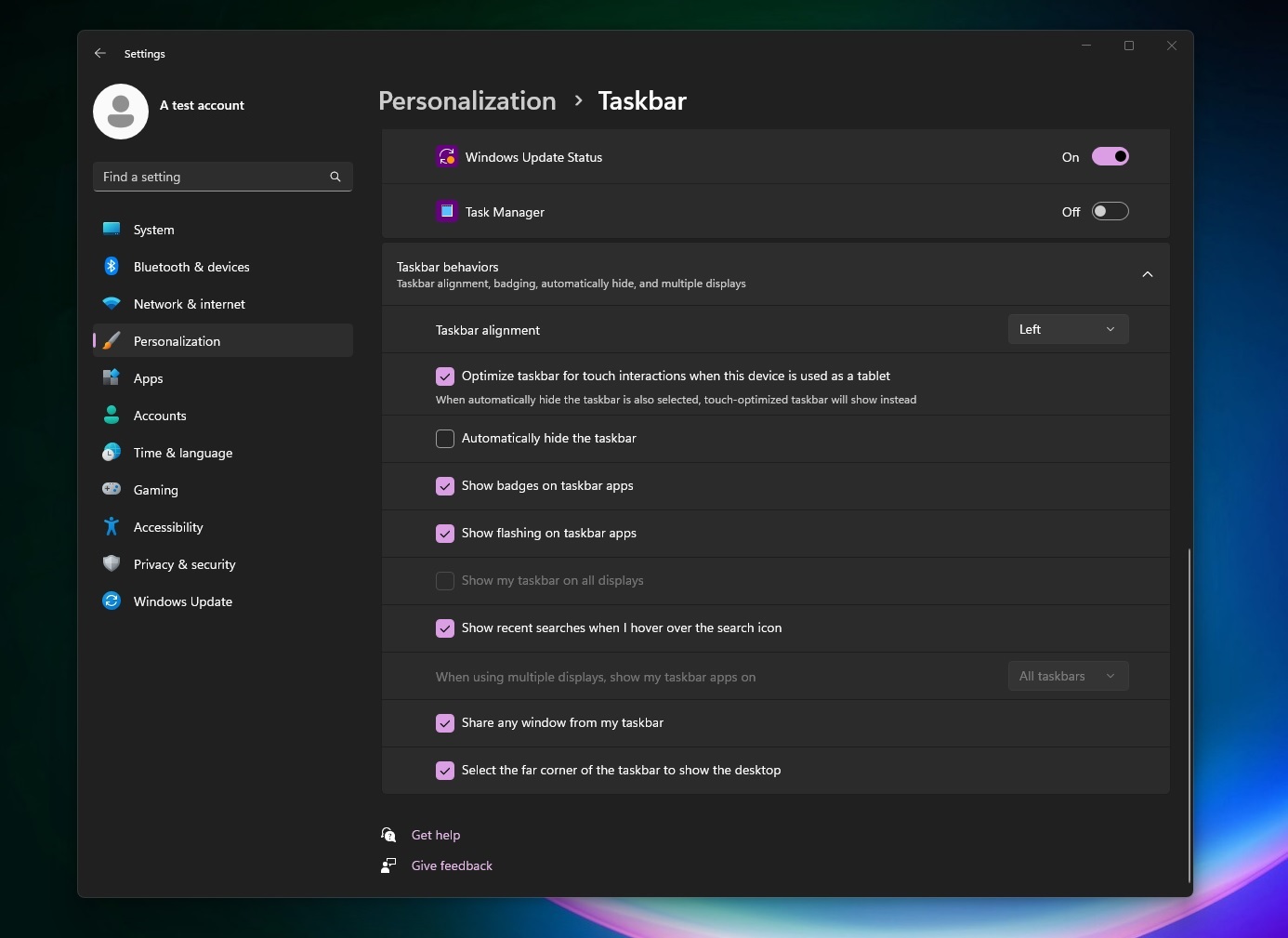With Windows 11, Microsoft is still hoping to take on the iPad and the company has decided to go ahead with a new feature that would make the taskbar more tablet-friendly. This change could sacrifice some existing taskbar functionality in favour of a chunky but touch-friendly look for those using tablets.
Apple’s iPad series started with a simple operating system that eventually got better with frequent updates. On the other hand, Microsoft has been trying to bridge the gap between tablets and desktops for the past several years. While Windows 8 tablet efforts failed, Microsoft isn’t willing to give up on the idea of ‘Windows for tablet’.
Microsoft recently released a new preview update (Build 25193) with a couple of tweaks, such as Xbox subscription integration in Settings and File Explorer bug fixes. This build also comes with a hidden feature that will make using Windows 11 on tablets i.e touchscreen devices much better.
As you can see in the above screenshot, there’s a new option ‘optimize taskbar for touch interactions when this device is used as a tablet’. In other words, when the toggle is on, Windows will automatically detect the ‘state’ of the device and switch to a tablet-optimized taskbar when it believes you’re using the device as a tablet.
This feature was first introduced earlier this year, but Microsoft removed it from the preview builds as it crippled the system tray.
It looks like the company wants to bring back the delayed tablet-friendly taskbar. In Windows 11 Build 25193, the taskbar on tablets now has two states: a collapsed and expanded mode.
In the default collapsed mode, the taskbar may appear much thinner i.e slim, giving more space to apps, desktops and other areas of the OS. This taskbar state is particularly useful on small tablets as it could prevent accidental taps on taskbar buttons, such as the system tray or overflow menu.
The second state ‘expanded’ mode aims to make the taskbar touch-friendly i.e chunky or wider. This lets you easily tap on items pinned to the taskbar, so you can select more items using the touch screen.
To switch between the two states of the taskbar, all you need to do is swipe your finger up or down at the bottom of the screen.
In our tests, we observed that this mode won’t turn on accidentally on desktops or laptops, which means it will only work on 2-in-1s and tablets with a touchscreen or when Windows detects ‘touch interactions’. It could be the default state on some Surface products having touchscreens that can be folded back or detached from the keyboard.
It is also worth noting that this is a hidden feature and users won’t see it even if they install the latest updates. If the testing goes well and the tablet-friendly taskbar doesn’t cripple system tray functionality for desktops, we could see the official comeback of this feature in the future.








